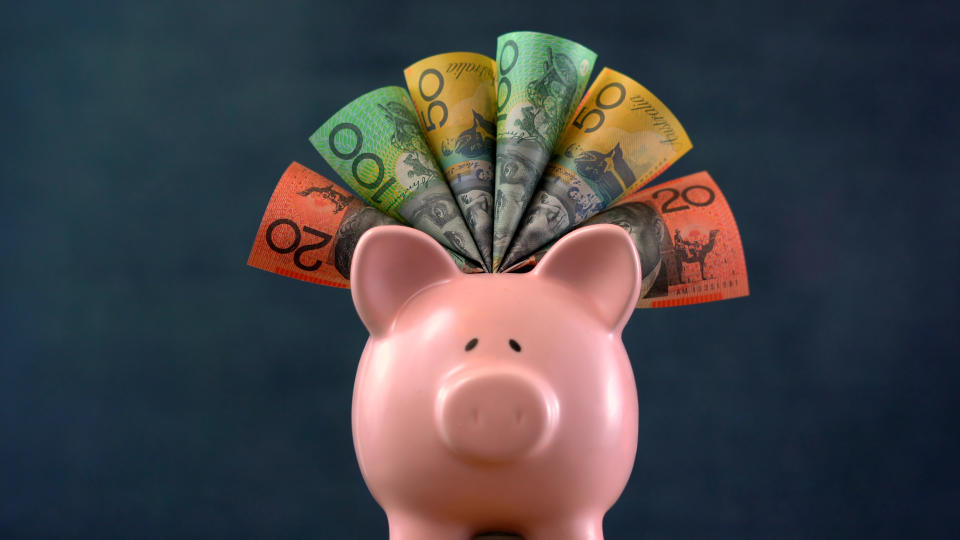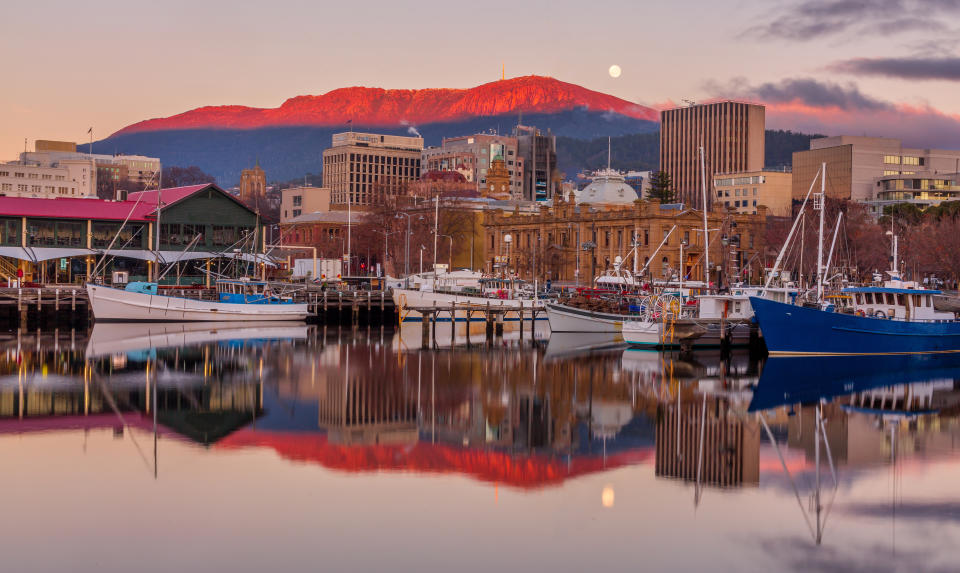Survival package: What the $66 billion means for you

Prime Minister Scott Morrison has thrown another lifebelt to the Australian economy in the form of a $66 billion package, designed to “cushion the blow” for businesses.
It comes after the government’s initial $17.6 billion rescue package largely fell flat, with critics claiming the business incentives would be untouched by owners too busy cutting costs to look to investment, and others suggesting the $750 payments aren’t enough for the nation’s most vulnerable.
Missed the first package? Here’s what it meant for Australians
EMERGENCY RELIEF: Banks throw $100bn lifeline to small businesses
$750 payments: Here’s who will receive them
And in the 10 days since the first package was announced, the situation in Australia has changed rapidly with mass cancellations nationwide and airlines like Qantas grounding all international flights and temporarily standing down 20,000 staff.
The Reserve Bank of Australia on Thursday announced it would cut rates to a record low of 0.25 per cent in an extraordinary decision.
The big banks threw a $100 billion lifeline to small businesses through a range of measures including a six month deferral of loan repayments.
Here’s what’s inside the second stimulus package:
If you’re a business owner…

Small and medium businesses and not-for-profits will receive a fall rebate on income tax with holdings, worth up to $100,000. This will go to around 690,000 businesses employing 7.8 million people, and 30,000 not-for-profits.
And all of these groups will receive at least $20,000, which is 10 times the amount announced in the first stimulus.
This is expected to cost $25.2 billion.
On top of that, businesses will be able to borrow up to $250,000 unsecured with the government as guarantor, and won’t be required to make repayments for six months.
But those measures don’t apply to refinancing, as those existing customers already receive the six-month freeze on repayments under the plan announced by the government.
If you receive welfare…

The JobSeeker allowance, formerly known as Newstart, will be doubled through a $550 supplement payment for the next six months, and the asset test will be waived for access to it, during the Covid-19 crisis period. However, the income test still applies.
“The supplement will provide an additional $550 a fortnight on top of the existing JobSeeker, or Newstart payment and will be available to sole traders, casual workers who meet the income test. This means, anyone eligible for the maximum JobSeeker payment will now receive more than $1100 a fortnight, effectively doubling the JobSeeker allowance,” Treasurer Josh Frydenberg said.
Additionally, the government is extending the $750 payments previously announced to those on income support.
If you lost your job…

You will also be eligible for the new, time-limited supplement paid at $550 a fortnight for the next six months. This supplement will come at a cost of $14.1 billion.
If you’re a pensioner, veteran or concession card holder…

On top of the $750 payments announced in the first package, the government will now provide another $750 payments to veteran income support recipients, social security support recipients and eligible concession card holders.
However, Australians who receive the $550 will not be eligible for the extra $750.
This payment will be made from 13 July to around 5 million Australians, and is estimated to cost $4 billion.
If you’re a retiree…

Deeming rates are being reduced by a further quarter of a per cent to account for the RBA’s interest rate cut on Thursday.
Additionally, while retirees currently are required to draw down a minimum of 4 per cent a year from superannuation. The government is halving this requirement to 2 per cent for this year and for next year.
This means retirees will be able to be more flexible with their super.
If your income has fallen by 20 per cent or more due to coronavirus…

If you’re a sole trader or casual worker who has lost at least 20 per cent of your income, you will be able to apply for early access to your superannuation from April.
This will be capped at $10,000 this financial year and another $10,000 in the following financial year, with withdrawals tax-free.
Airlines given $715 million

The government on Tuesday night announced a $715 million package to try to stem the financial devastation within Australia’s carriers. Aussies abroad are also being urged to return home as soon as possible as the Department of Foreign Affairs and Trade warns of international border closures. All of this, having a disastrous impact on Australia’s tourism, hospitality and retail sectors.
Announcing the measures on Sunday, Prime Minister Scott Morrison said the goal is to let small businesses know the government will support them.
“Many of our restaurants and bars, our hotels and tourism operators, our hairdressers and beauty salons and our events companies [are] already feeling the brunt of the economic impact of coronavirus," he said in a statement.
"There is a lot of pain coming but we're going to cushion the blow as best we can," he said.
"In the event that someone does regrettably lose their job because of the coronavirus, it's very important that business give their workers the confidence that this is just temporary and ... when they reopen their doors and get back to business, that they will want to get them back on the payroll as soon as possible."
With the $17.6 billion already pledged and the $105 billion from the Reserve Bank of Australia, the government’s response is worth $189 billion, or 9.7 per cent of Australia’s Gross Domestic Product.
That’s twice the percentage pledged by governments in Canada and Hong Kong.
States roll out billions in separate packages

The state and territory governments have also begun rolling out individual stimulus packages. Here’s what they include.
New South Wales: $2.3 billion

New South Wales will roll out a $2.3 billion package. This includes:
$700 million for health care. This includes double intensive care unit capacity, setting up clinics, purchasing more equipment and increasing testing.
$1.6 billion for job creation and tax relief. This means businesses with payrolls of up to $10 million will see payroll tax waived until 30 June 2020. $250 million will go towards employing more cleaners for public spaces, another $750 million for public works projects to keep people employed and $80 million to waive some fees for some hospitality businesses.
Northern Territory: $65 million

The Northern Territory government is already in a deficit but will funnel $65 million into the vulnerable economy. This includes:
A fees and charges freeze until July 2021. That means electricity bills, water bills and car registration fees will not increase.
$30 million in a home improvement scheme which provides grants of up to $6,000, fuellng work for tradies.
$20 million for a business improvement scheme which offers grants of up to $20,000 for businesses to upgrade and purchase new equipment.
Tasmania: $420 million

The Tasmanian government will spend $420 million on protecting the island state’s economy. That includes:
Support payments of $250 for individuals required to self-isolate, and $1,000 for families who have to self-isolate.
$2 million in primary health support for pharmacies and GPs.
$1 million for accommodation support for healthcare workers with unwell family members, so those frontline workers can continue to work.
$20 million in interest-free loans to exposed sectors. Companies in the tourism, seafood, hospitality and export sectors can also apply for payroll tax to be waived for four months.
$1 million grants to mental health services.
And the government will put $50 million into maintenance on public buildings to encourage employment.
Western Australia: $607 million

The Western Australian government will put $607 million into the state economy with most of that going towards a charge and fees freeze. Here’s what’s inside it:
$402 million to freeze household bills and charges until 30 June 2021, meaning those bills will not increase.
$91 million to boost the Emergency Assistance Package. This will see payments increased from $300 to $600 for vulnerable Australians.
$114 million for businesses. This will see businesses with a payroll of between $1 million and $4 million one-off $17,500 grants.
Payroll tax will be waived.
Casual and full-time public health sector workers will receive 20 days paid sick leave.
Queensland: $528 million+

The Queensland government has announced a package focusing on small businesses which includes:
$500 million will go to funding 12-month interest-free loans of up to $250,000 for businesses.
At least $27 million to waive fees for hospitality and tourism businesses.
$1 million for student support.
South Australia: $350 million

The ship-building capital of Australia, South Australia, will see $350 million in stimulus designed to keep the construction industry afloat.
That includes:
$22 million for nature-based tourism infrastructure.
The rest of it has not been clearly detailed, although it will be focused on infrastructure projects and funds for tourism facilities.
Victoria: Survival payments and $437 million for hospitals

The Victorian government is yet to officially announce its stimulus package, however it’s expected that businesses will receive “survival payments” designed to keep them afloat.
“We have many, many businesses who have zero income, so offering them a tax cut doesn't necessarily do it," Premier Daniel Andrews told reporters on Wednesday.
"We want to make sure that they're there at the end of this virus, and we need to be providing that sort of emergency capital, that sort of emergency cash."
But the Victorian government will also put $437 million into its hospitals to open 129 new beds.
Australian Capital Territory: Yet to be revealed

The Australian Capital Territory state government is yet to reveal its stimulus package.
Make your money work with Yahoo Finance’s daily newsletter. Sign up here and stay on top of the latest money, news and tech news.
Follow Yahoo Finance Australia on Facebook, Twitter, Instagram and LinkedIn.

 Yahoo Finance
Yahoo Finance 
